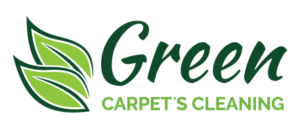How to Avoid Mold in Carpet From Water Damage
Mold can grow in harmful quantities on the flooring of your home as well as underneath it if it floods or has a plumbing leak.
Mold should be a concern for property owners even if only a small amount of water seeps into their homes as a result of flooding or a broken pipe. This could lead to the growth of mold.
Reduce the risk of mold growth by quickly drying out any water damage.
If you begin the cleanup process as soon as possible after water damage, you will reduce the likelihood that mold will start growing under your carpet.
The equipment required is straightforward and consists of fans, cleaners, and bleach.
Mold can begin to grow and cause significant problems with a relatively small amount of water.
It is common for mold and mildew to grow in carpets that have high humidity levels because the excess humidity becomes trapped underneath the carpet backing and the padding of the carpet. Despite the fact that it is not always possible to control the humidity levels in the air, purchasing a dehumidifier of sufficient quality can help reduce the levels of trapped moisture that raise the likelihood of mold growth. Regular vacuuming helps remove some of that moisture, which is another important step in maintaining the cleanliness and dryness of carpets.
Mold and mildew have a propensity to grow underneath carpeting due to the presence of high humidity levels, floods, spills, and other forms of water damage. One of the most important things that must be done to protect the home and its contents from the damaging effects of water is to ensure that the plumbing system, including all of its fittings and features, is kept in good working order. This includes the carpeting! Perform a comprehensive inspection of your plumbing system once every year or two in order to check for leaks, worn connectors, rusted pipes, and other problems that require fixing.
Mold in carpets often results from water damage, which can be caused by a number of things, including broken dishwashers and washing machines. Check the drainage hoses of these appliances once a year or more frequently if necessary to ensure that they are in good condition and free from kinks and other types of damage. Never put too much strain on these machines, and never ignore the warning signs that they need to be repaired, such as loud banging sounds or inefficient washing, for example.
In the event that there is a leak in the house, it is imperative that any standing water be removed without delay! If you need to remove floodwaters, you shouldn’t use a standard household vacuum; rather, you should invest in a commercial wet-dry vacuum. It is important to keep in mind that removing floodwater from above the carpet alone is not sufficient, as it is easy for water to pool under the carpet’s backing and padding. To thoroughly dry the area, lift the carpeting to expose the subfloor, then use blowers designed for a commercial setting.
Call a carpet cleaning professional rather than attempting to remove the water on your own if you are unsure how to remove the carpeting or if the floodwaters were particularly severe. In most cases, they will be able to extract any remaining floodwaters and then thoroughly clean the carpets in order to guarantee a complete drying and put a stop to the growth of mold before it can spread.
If things continue to get worse, your best bet is to seek the assistance of a professional. Dial (800) 449-4304 to get in touch with Green Carpet’s Cleaning. We can assure you a fast and Same Day Carpet Cleaning Antioch Antioch Service
How Effective Is Dry Carpet Cleaning Antioch
Is It Past the Point Where the Carpets Need to Be Cleaned Antioch

